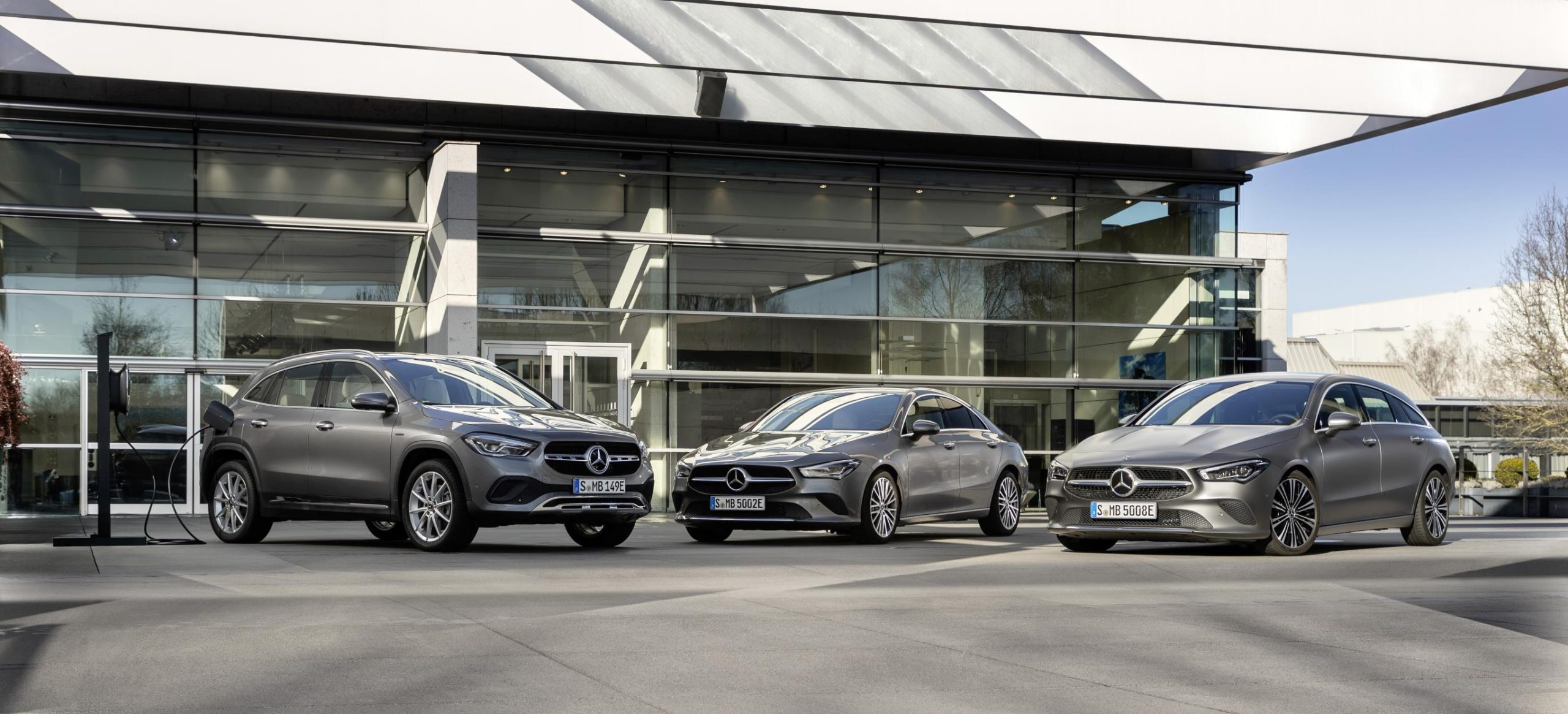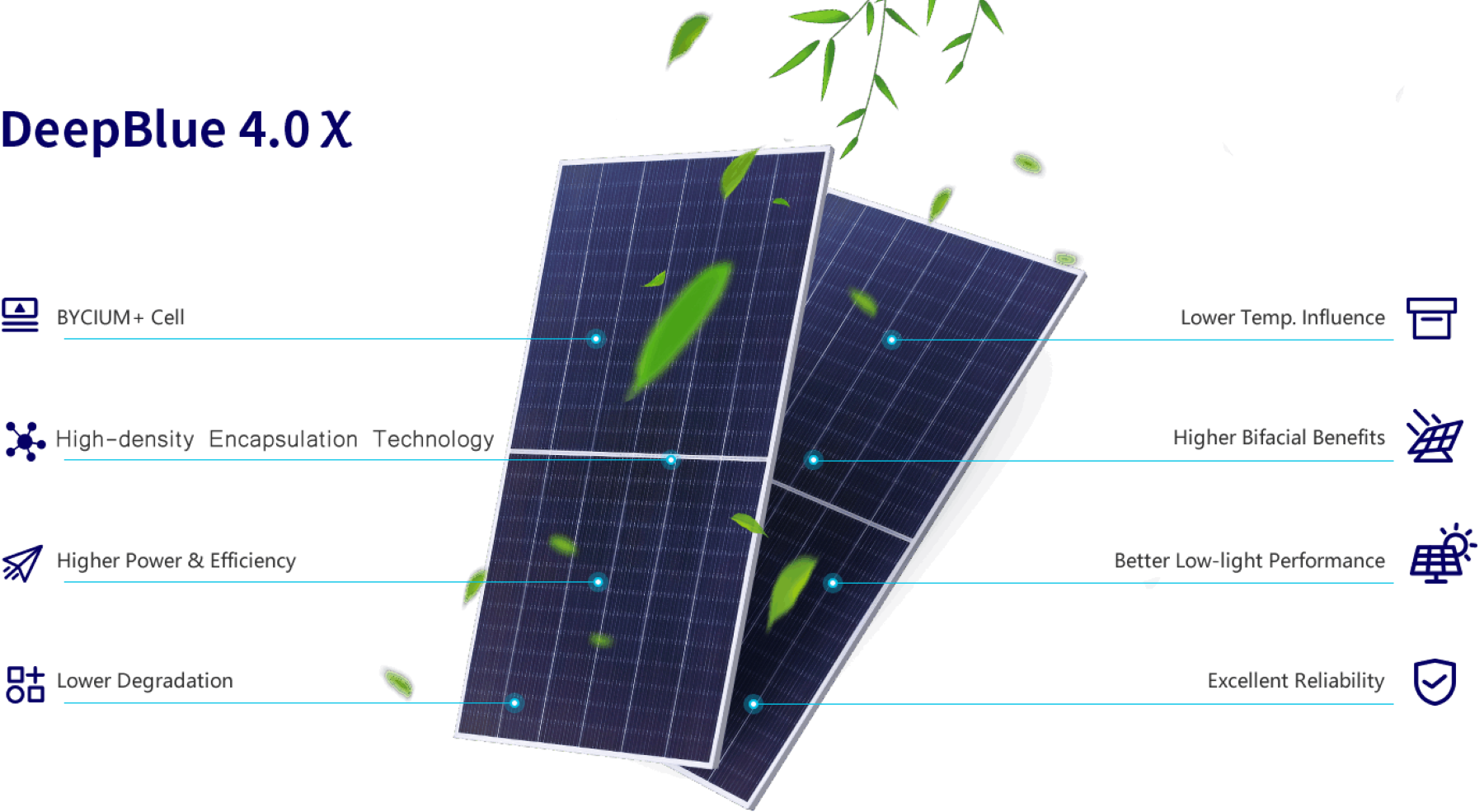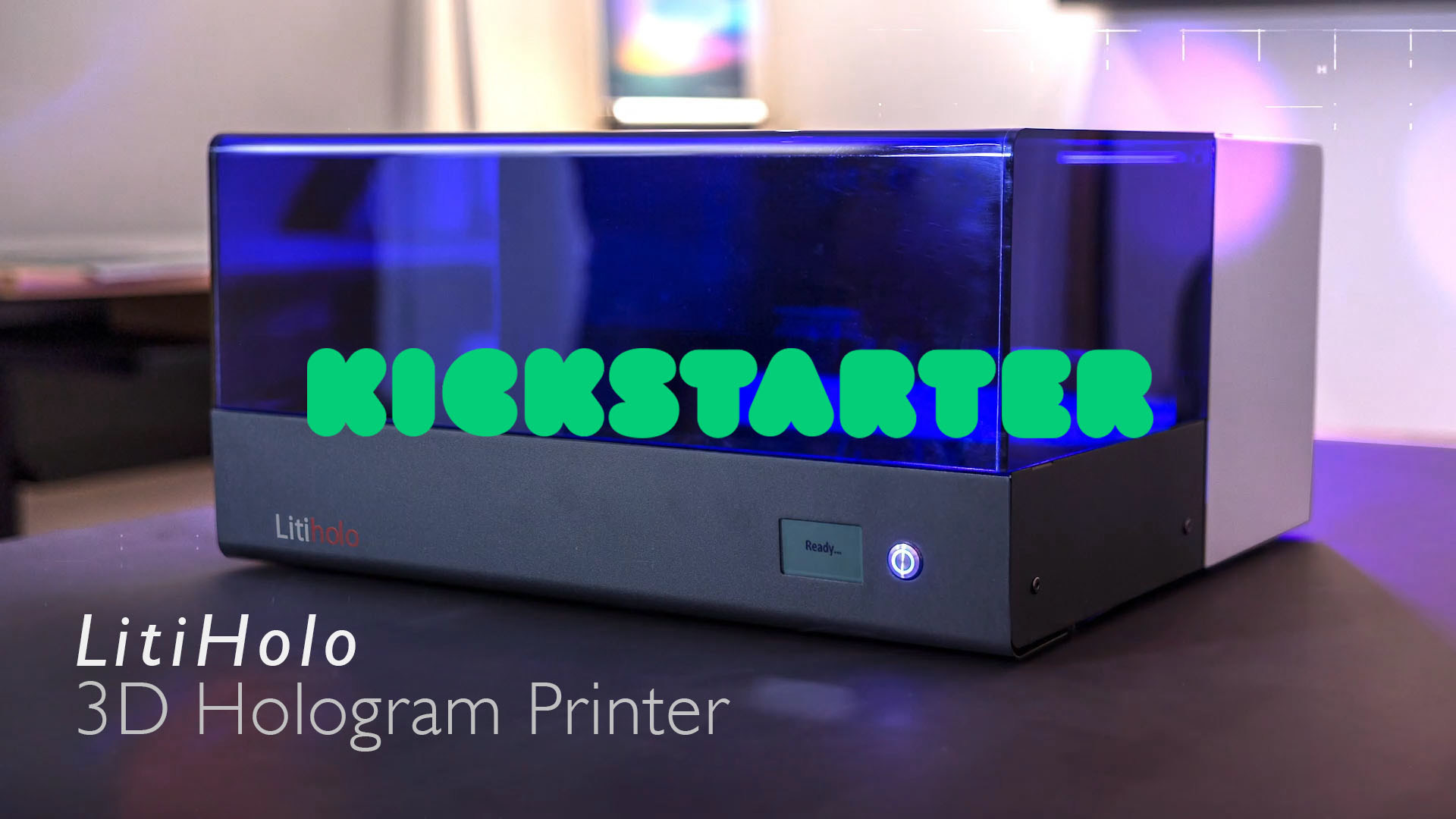THREE NEW PLUG-IN HYBRID MODELS COMPLETE THE MERCEDES-BENZ COMPACT-CAR FAMILY

CLA Coupé, CLA Shooting Brake and GLA now with EQ Power
UK information
- CLA 250 e Coupé and CLA 250 e Shooting Brake due to go on sale in April
- GLA 250 e will go on sale in May
- First deliveries expected early summer
- UK pricing and specification is still to be confirmed
Stuttgart. Mercedes‑Benz Cars is continually increasing its range of plug-in hybrids under the EQ Power label. With the CLA 250 e Coupé (combined fuel consumption 1.5-1.4 l/100 km, combined CO2 emissions 35-31 g/km, combined electrical consumption 15.1-15.0 kWh/100 km)1, CLA 250 e Shooting Brake (combined fuel consumption 1.6-1.4 l/100 km, combined CO2 emissions 37-33 g/km, combined electrical consumption 15.4-14.8 kWh/100 km)[1] and GLA 250 e (combined fuel consumption 1.8-1.6 l/100 km, combined CO2 emissions 42-38 g/km, combined electrical consumption 16.1-15.5 kWh/100 km)[2], Mercedes-Benz is completing the range of EQ Power models in the compact-car family with the third-generation hybrid drive system. The new models can be ordered in spring of this year, with the market launch following just a few weeks later.
For the new compact vehicles with EQ Power, (electric) driving pleasure and suitability for everyday use are to the fore. This is illustrated by the models’ highlights:
- Electric operating ranges of 71-79 km (NEDC)
- Electric output 75 kW
- System output 160 kW
- System torque 450 Nm
- Alternating-current (AC) charging system up to 7.4 kW
- Direct-current (DC) charging system at max. 24 kW
- Hardly any restrictions on the load compartment.
The vehicles belonging to Mercedes-Benz’s compact car family feature transversely mounted engines. A compact hybrid traction head has been developed for the 8G-DCT dual clutch transmission which follows the same technical principles as the corresponding component on the vehicles with a longitudinally installed engine. It is a permanently excited synchronous machine as an internal rotor. The stator is permanently integrated in the traction head housing, while the low-loss wet clutch is incorporated in the motor’s rotor.
On-demand stator and rotor cooling allow use of the electric motor’s peak and continuous output without any problems.
For the first time on a Mercedes-Benz vehicle, the combustion engine is started by the electric motor – the compact hybrids do not have a separate 12-volt starter.
High system output provides for plenty of driving enjoyment
The electric machine achieves 75 kW. Together with the 1.33-litre four-cylinder engine this produces a system output of 160 kW (218 hp) and a system torque of 450 Nm. Thanks to the EQ Power of the electric motor, these vehicles respond to the accelerator very rapidly and deliver impressive performance: the A 250 e, for example, requires 6.6 seconds for the sprint from 0 to 100 km/h, and its top speed is 235 km/h (see next page for further data).
A lithium-ion high-voltage battery with a total capacity of approx. 15.6 kWh is used as an electric energy storage unit. The new compact models can be charged with alternating current or direct current. A corresponding vehicle socket is located in the right-hand side wall of the vehicles. This means that the compact plug-in hybrids can be charged at a 7.4 kW wallbox with alternating current (AC) within 1 h 45 min from 10-100 percent SoC (State of Charge). For direct-current (DC) charging at 24 kW, the battery can be charged from 10-80 percent SoC in around 25 minutes.
The batteries are supplied by the wholly owned Daimler subsidiary Deutsche ACCUMOTIVE. The high-voltage battery is water-cooled and weighs approx. 150 kg.
Clever packaging
An innovative exhaust system allows exceptionally clever packaging: to enable only minimal reduction in boot capacity compared with the sister models without hybrid engines, the exhaust ends in a centrally positioned outlet under the vehicle floor, with the rear silencer housed in the transmission tunnel. Integrating the fuel tank into the axle installation space creates additional room beneath the rear seats for the high-voltage battery.
The compact vehicles are equipped with third-generation plug-in technology. Its functions include in particular the intelligent, route-based operating strategy, taking factors such as navigation data, speed limits and route into account. The operating strategy takes into account the entire planned route and prioritises the electric driving mode for the most sensible route sections in each case.
With the launch of MBUX (Mercedes-Benz User Experience) the previous plug-in operating modes of all EQ Power models have been converted to drive programmes. That means that in every Mercedes-Benz plug-in hybrid the new drive programmes “Electric” and “Battery Level” are available. This is the case from the outset for the compact models. Maximum e-performance can be experienced in “Electric”. The combustion engine is only engaged if the driver uses kickdown on the accelerator pedal. In the “Electric” programme, the energy recovery level can also be selected via paddles behind the steering wheel. The paddles on the steering wheel enable the selection of five different recuperation levels (DAUTO, D+, D, D– and D—).
Comfort, ECO and Sport modes are also available. According to the given requirements, the driver is thus able to give priority to electric driving, place the emphasis on driving dynamics in combined drive mode or give preference to combustion mode in order to save electric range, for example.
One important comfort feature is the pre-entry climate control prior to starting a journey, which can also be activated conveniently by smartphone. The towing capacity of the compact hybrids is impressive at 1600 kg (braked).
The data at a glance
| A 250 e3 | A 250 e Saloon1 | B 250 e1 | CLA 250 e1 Coupé | CLA 250 e1 Shooting Brake | GLA 250 e6 | |
| Number of cylinders/arrangement | 4/in-line | |||||
| Displacement (cc) | 1332 | |||||
| Petrol engine rated output (kW/hp at rpm) | 118/160 at 5500 +/- 1.5% | |||||
| Petrol engine rated torque (Nm at rpm) | 250 at 1620 | |||||
| Electric motor rated output (kW) | 75 | |||||
| Electric motor rated torque (Nm) | 300 | |||||
| System output (kW/hp) | 160/218 | |||||
| System torque (Nm) | 450 | |||||
| Acceleration 0-100 km/h (s) | 6.6 | 6.7 | 6.8 | 6.8 | 6.9 | 7.1 |
| Top speed (km/h)[4] | 235 | 240 | 235 | 240 | 235 | 220 |
| Top speed, electric (km/h) | 140 | |||||
| Combined fuel consumption from (l/100 km) | 1.5-1.4 | 1.4 | 1.6-1.4 | 1.5-1.4 | 1.6-1.4 | 1.8-1.6 |
| Combined CO2 2 emissions from (g/km) | 34-33 | 33-32 | 36-32 | 35-31 | 37-33 | 42-38 |
| Total battery capacity (kWh) | 15.6 | |||||
| Combined electrical consumption (kWh/100 km) | 15.0-14.8 | 14.8-14.7 | 15.4-14.7 | 15.1-15.0 | 15.5-14.8 | 16.1-15.5 |
| NEDC electric range (km) | 74-76 | 75-77 | 70-77 | 72-79 | 69-76 | 64-71 |
| WLTP electric range (km)[5] | 60-68 | 61-69 | 56-67 | 60-69 | 58-68 | 53-61 |
| Prices starting at (euros)[6] | 36,943.55 | 37,300.55 | 37,663.50 | – | – | – |
90 percent of everyday driving can be completed in all-electric mode
With the help of the free EQ Ready App,[7] available free of charge, Mercedes-Benz has established how long the journeys of people interested in e-mobility are on average. The results show that
- 90 percent of all journeys are shorter than 50 kilometres,
- 96 percent of all journeys are shorter than 100 kilometres and
- 99 percent of all journeys are shorter than 400 kilometres
The range of average distances per journey by interested persons varies in the individual markets, extending from just over eight kilometres in Hong Kong to slightly more than 27 kilometres in the Netherlands, where there is particularly high interest in e-mobility. This means that 90% of everyday trips can be completed exclusively under electric power with Mercedes-Benz’s current plug-in models.
Mercedes me Charge helps with charging en route
As well as using the domestic power supply, e.g. at a Mercedes-Benz Wallbox, convenient and uncomplicated charging is possible during the journey, too. That’s because the MBUX infotainment system (Mercedes-Benz User Experience) assists the driver in finding charging stations. The MBUX system understands natural speech, allowing the driver to start a search simply by saying “Hey Mercedes, find charging stations nearby”.
Via Mercedes me Charge, drivers of a plug-in hybrid model can optionally obtain access to one of the world’s largest charging networks, with over 300 different operators in Europe alone (municipalities, car parks, motorways, shopping centres, etc.). Thanks to navigation, Mercedes-Benz customers can find these stations easily and can gain convenient access to the charging stations via the Mercedes me Charge card, the Mercedes me App or directly from the car. No separate contracts are necessary for this: apart from simple authentication, customers benefit from an integrated payment function with simple billing after they have registered their payment method once. Each charging process is booked automatically. The individual charging processes are clearly listed in a monthly invoice.
Contacts:
Markus Nast, +49 160 8680338, markus.nast@daimler.com
Koert Groeneveld, +49 160 8614747, koert.groeneveld@daimler.com
Further information about Mercedes-Benz is available online at www.mercedes-benz.com. Press releases
and digital services for journalists and multipliers are available on our online platform Mercedes me media at media.mercedes-benz.com and on our Daimler Global Media Site at media.daimler.com. You can also learn
about current Mercedes-Benz Cars & Vans topics and events on our Twitter channel @MB_Press at www.twitter.com/MB_Press.
Mercedes-Benz AG at a glance
Mercedes-Benz AG is responsible for the global business of Mercedes-Benz Cars and Mercedes-Benz Vans with over 173,000 employees worldwide. Ola Källenius is Chairman of the Board of Management of Mercedes-Benz AG. The company focuses on the development, production and sales of passenger cars, vans and services. Furthermore, the company aspires to be leading in the fields of connectivity, automated driving and alternative drives with its forward-looking innovations. The product portfolio comprises the Mercedes-Benz brand with the sub-brands Mercedes-AMG, Mercedes-Maybach and Mercedes me – as well as the smart brand, and the EQ product and technology brand for electric mobility. Mercedes-Benz AG is one of the largest manufacturers of premium passenger cars. In 2019 it sold nearly 2.4 million cars and more than 438,000 vans. In its two business divisions, Mercedes-Benz AG is continually expanding its worldwide production network with over 40 production sites on four continents, while aligning itself to meet the requirements of electric mobility. At the same time, the company is developing its global battery production network on three continents. Sustainable actions play a decisive role in both business divisions. To the company, sustainability means creating value for all stakeholders on a lasting basis: customers, employees, investors, business partners and the society as a whole. The basis for this is the sustainable business strategy of Daimler in which the company takes responsibility for the economic, ecological and social effects of its business activities and looks at the entire value chain.
[1] The stated figures are the measured “NEDC CO2 figures” in accordance with Article 2 No. 1 Implementing Regulation (EU) 2017/1153. The fuel consumption figures were calculated based on these figures. The range and the electrical consumption have been determined on the basis of Regulation (EC) No. 692/2008. A different figure may apply as the basis for calculation as per the German Electric Mobility Act (EmoG). A higher value may apply as the basis for calculating the motor vehicle tax.
Further information on the official fuel consumption and the official specific CO₂ emissions of new passenger cars can be found in the “Guide to Fuel Consumption, CO₂ Emissions and Electricity Consumption” for new passenger cars, which is available free of charge at all sales outlets and from Deutsche Automobil Treuhand GmbH at www.dat.de.
[2] Figures for the fuel consumption, electrical consumption, range and CO2 emissions are provisional, and were determined by the Technical Service for the certification process acc. to the WLTP test procedure, then correlated for NEDC values. EC type approval and certificate of conformity with official figures are not yet available. Differences between the stated figures and the official figures are possible.
[3] The stated figures are the measured “NEDC CO2 figures” in accordance with Article 2 No. 1 Implementing Regulation (EU) 2017/1153. The fuel consumption figures were calculated based on these figures. The range and the electrical consumption have been determined on the basis of Regulation (EC) No. 692/2008. A different figure may apply as the basis for calculation as per the German Electric Mobility Act (EmoG). A higher figure may apply as the basis for calculating the motor vehicle tax.
[4] Electronically limited
[5] AER combined. All-electric range: All-electric range with fully charged battery until the combustion engine starts for the first time.
[6] Recommended retail prices for Germany including 19% VAT.
[7] https://www.mercedes-benz.com/de/eq/ueber-eq/eq-ready/
6 Figures for the fuel consumption, electrical consumption, range and CO2 emissions are provisional, and were determined by the Technical Service for the certification process acc. to the WLTP test procedure, then correlated for NEDC values. EC type approval and certificate of conformity with official figures are not yet available. Differences between the stated figures and the official figures are possible.





